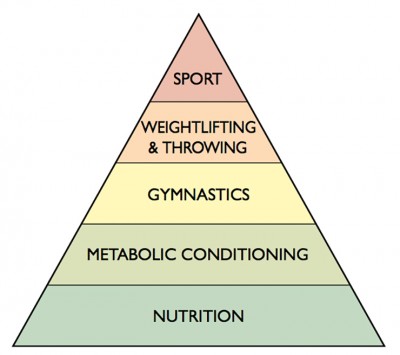
Welcome back; let’s hope that 2021 is not like 2020.
Some recently asked me: “Can’t I just play sports and get my fitness from that? After all, if someone is involved in games like soccer, martial arts, baseball, and basketball regularly, they are most likely getting a fantastic workout from these disciplines. Why the need for training as a separate discipline?”
Great question. Sport plays a wonderful role in fitness. Sport is the application of fitness in a fantastic atmosphere of competition and mastery. Training efforts typically include relatively predictable repetitive movements and provide limited opportunity for the essential combination of the 10 general physical skills we discussed in past. [cardiovascular/respiratory endurance, stamina, strength, flexibility, power, speed, coordination, agility, balance, and accuracy.] You are as fit as you are competent in each of these 10 skills. A regimen develops fitness to the extent that it improves each of these 10 skills
The combined expression, or application, of the 10 general skills is our motivation for their development in the first place. Sports and games like soccer, martial arts, baseball, and basketball in contrast to our training workouts have more varied and less predictable movements. But where sports develop and require all 10 general skills simultaneously, they do so slowly compare to a CrossFit strength-and-conditioning regimen. Sport is better, at expression and testing of skills than it is at developing these same skills. Both expression and development are crucial to the fitness we seek. Sport in many respects more closely mimics the demands of nature than does our training. We encourage and expect our athletes to engage in regular sports efforts in addition to all their strength-and-conditioning work.
A Theoretical Hierarchy of Development
A theoretical hierarchy exists for the development of an athlete It starts with nutrition and moves to metabolic conditioning (Cardio), gymnastics, weightlifting and finally sport. This hierarchy largely reflects foundational dependence, skill, and to some degree, time ordering of development. The logical flow is from molecular foundations (proper nutrition) to cardiovascular sufficiency, body control (gymnastics), external object control (weights), and ultimately mastery and application (sport). This model has greatest utility in analyzing athletes’ shortcomings or difficulties. We do not deliberately order these components, but nature will. If you have a deficiency at any level of “the pyramid,” the components above will suffer.
Integration
Every regimen, every routine contains within its structure a blueprint for its deficiency. If you only work your weight training at low reps, you will not develop the localized muscular endurance that you might have with high reps. If you work high reps exclusively you will not build the same strength or power that you would have at low reps. There are advantages and disadvantages to working out slowly or quickly, with heavy weights or light weights, completing “cardio” before or after, etc.
For the fitness that we are pursuing, every parameter within your control needs to be modulated to broaden the stimulus as much as possible. Your body will only respond to an unaccustomed stressor; routine is the enemy of progress and broad adaptation. Do not subscribe to high reps or low reps or long rests or short rests but strive for variance.
So then, what are we to do? Work on becoming a better weightlifter, stronger-better gymnast and faster rower, runner, swimmer, cyclist is the answer. There are an infinite number of regimens that will deliver the goods. Another favorite is to blend elements of gymnastics and weightlifting in couplets that combine to a dramatic metabolic challenge. An example would be to perform 5 reps of a moderately heavy back squat followed immediately by a set of max-reps pull-ups repeated 3 to 5 times.
On other occasions we will take five or six elements balanced between weightlifting, metabolic conditioning and gymnastics and combine them in a single circuit that we blow through three times without a break. We can create routines like this forever. In fact, CrossFit.com archives contain thousands of daily workouts consciously mixed and varied in this manner. Perusing them will give you an idea of how we mix and modulate our key elements. I recommend subscribing to their daily emails & you can see firsthand how the workout of the day, [WOD] rarely repeats itself.
We have not mentioned here the role of jumping, kettlebells, odd-object lifting and obstacle-course work. The recurring theme of functionality and variety clearly suggests the need and for their inclusion though.
Finally, strive to blur distinctions between “cardio” and “strength” training. Nature has no regard for this distinction or any other, including our 10 physical adaptations. We will use weights and plyometrics training to elicit a metabolic response and sprinting to improve strength.
Hope that sheds some light on that fantastic question. As always, we are here to help. Reach out with any questions or schedule your free consult and session to a new and improved version of you!
Continue to man up and lift your life!
By Rabbi Hershel Praeger
The information provided in this article is for educational purposes only. Rabbi Fitness LLC is not a doctoL The contents of this article should not be taken as medical advice. It is not intended to diagnose, treat, or cure any health problem- nor is it intended to replace the advice of a physician. Always consult your physician or qualified health professional on any matters regarding your health and/or engagement in physical activity, especially if you (or your family) have a history of high blood pressure, heart disease, or if you have ever experienced chest pain when exercising or have experienced chest pain in the past month when not engaged in physical activity, smoke, have high cholesterol, are obese, or have a bone or joint problem that could be made worse by a change in physical activity.
CrossFit
Typography
- Smaller Small Medium Big Bigger
- Default Helvetica Segoe Georgia Times
- Reading Mode


